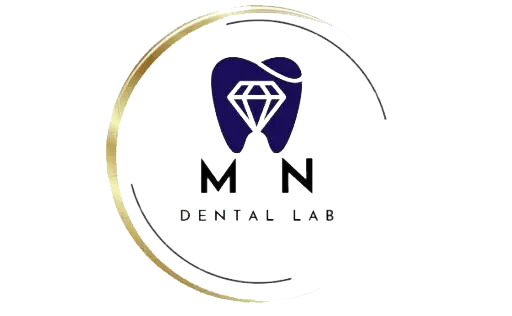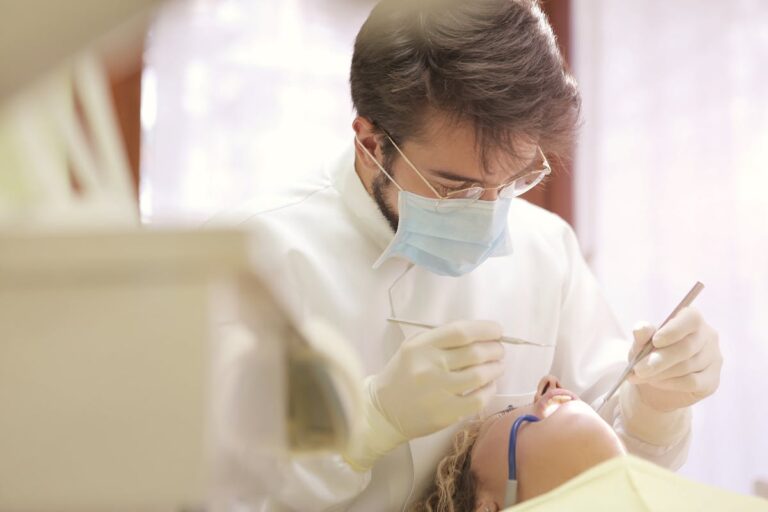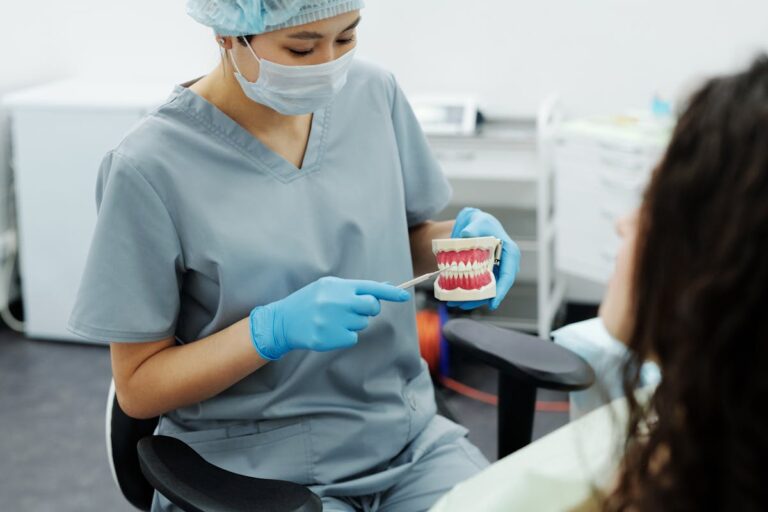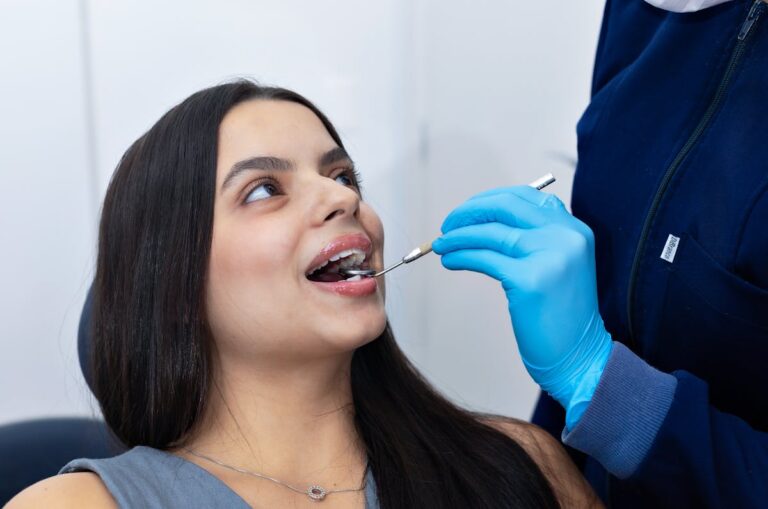In recent years, the focus of dental health in Minnesota has shifted towards preventative dentistry, a proactive approach that seeks to inhibit the progression of oral diseases before they necessitate more intensive treatment. This trend, driven by pioneering practices such as Park Dental and HealthPartners Dental Clinics, emphasizes regular examinations, fluoride treatments, and patient education as key strategies to maintain ideal oral health. What remains to be explored, however, is the broader impact of this approach on the state’s overall health outcomes and economic efficiency.
Understanding Preventative Dentistry
While many people may be familiar with the term, understanding preventative dentistry is key to maintaining ideal oral health. This aspect of dental care focuses on implementing preventative strategies to ward off oral diseases before they take hold. It is a proactive approach, reducing the likelihood of developing dental problems like decay, gum disease, and tooth loss. Oral screenings play a critical part in preventative dentistry. These evaluations allow professionals to detect potential issues early, facilitating prompt intervention. By adopting healthy oral practices, employing preventative strategies, and undergoing regular oral screenings, individuals can considerably enhance their oral health. Preventative dentistry is not merely about treating existing problems; it’s about preventing them in the first place.
The Role of Regular Check-ups
Building upon the concept of preventative dentistry, regular check-ups serve as a fundamental element in this preventive approach. The check-up frequency greatly contributes to the successful detection and prevention of oral health issues. By scheduling routine exams, dentists can identify potential problems early, allowing for more effective and less invasive treatment. Furthermore, these visits provide an excellent opportunity for patient education. Dentists can share valuable insights on proper oral hygiene practices, dietary habits, and the use of dental products. This knowledge empowers patients to take an active role in preserving their dental health. Consequently, regular check-ups, combined with patient education, form an inseparable pair in the preventative dentistry paradigm.
Impact on Oral Health
As a direct consequence of preventative measures and regular check-ups, significant improvements in oral health are often observed. Proactive dentistry, which emphasizes oral hygiene and patient education, plays a critical role in maintaining a healthy mouth. Proper brushing and flossing techniques, combined with regular dental visits, can dramatically reduce the incidence of cavities, gum diseases, and tooth loss. The Minnesota dental community places a high value on patient education, ensuring individuals understand the importance of good oral hygiene habits. This, in turn, leads to healthier smiles and fewer dental problems. Ultimately, preventative dentistry not only improves oral health but also contributes to an individual’s overall sense of well-being, accentuating the importance of this practice.
Preventative Dentistry and Overall Health
In light of the direct correlation between oral health and overall health, preventative dentistry in Minnesota extends beyond the scope of maintaining a healthy mouth. It forms an integral part of overall wellness, playing a crucial role in detecting early signs of systemic diseases like diabetes and heart disease, which often manifest first in the oral cavity. Preventative practices such as routine dental cleanings and exams, fluoride treatments, and dental sealants, not only help reduce the risk of dental diseases but also contribute considerably to overall health. They act as essential health assessments, catching potential issues before they escalate. In sum, preventative dentistry not only preserves oral health but also acts as a proactive measure for maintaining overall health.
Cost Benefits of Preventative Care
The cost benefits of preventative dental care are substantial and directly impact patients’ financial wellbeing. Regular dental checkups not only maintain oral health but also result in significant savings by detecting and addressing minor issues before they necessitate costly procedures. Consequently, investing in preventative care can be viewed as a strategic approach to avoid expensive, complex dental treatments in the future.
Savings With Regular Checkups
Though many might perceive regular dental checkups as an unnecessary expense, a closer look reveals substantial long-term savings. These cost savings are realized by implementing preventive measures that help maintain oral health. Regular checkups allow dentists to identify and address minor dental issues before they escalate into serious conditions requiring costly treatments. In addition, these checkups are instrumental in promoting good oral hygiene habits, further enhancing the potential for cost savings. In the long run, the expense of regular checkups, when compared to the financial burden of treating advanced dental diseases, proves to be a worthwhile investment. Consequently, preventive dentistry, through regular checkups, should be viewed as a cost-effective strategy, reinforcing the importance of maintaining oral health.

Avoiding Expensive Dental Procedures
While many consider preventative dentistry as merely a tool for oral health maintenance, it also serves as a significant deterrent to expensive dental procedures. By averting the onset of ailments such as tooth decay and gum disease, preventative measures reduce the need for invasive treatments, which often come with high costs. Routine dental cleanings, for instance, can identify early signs of tooth decay, making it possible to treat with inexpensive fillings instead of costly root canals. Similarly, periodical screenings for gum disease can prevent the progression to periodontitis, which may necessitate expensive surgeries. Consequently, investing in preventative dental care not only guarantees ideal oral health but also results in substantial financial savings in the long run.
Best Practices in Preventative Dentistry
As we shift to the discussion on “Best Practices in Preventative Dentistry,” it’s crucial to highlight its core elements. These components include regular dental check-ups, the fundamentals of dental hygiene, as well as the use of sealants and fluoride treatments. Each of these practices plays a significant role in maintaining oral health and preventing dental diseases.
Regular Dental Check-ups
In the domain of preventative dentistry, regular dental check-ups serve as a cornerstone for maintaining ideal oral health. These visits provide a platform for patient education, encouraging individuals to adopt habits that promote dental well-being. Understanding the role of regular check-ups in preventing tooth decay, gum disease, and other oral health issues is key to emphasizing their importance.
However, dental anxiety can deter many from these essential appointments. Professional dental teams in Minnesota endeavor to create a comfortable, stress-free environment, mitigating these fears. Through a combination of empathetic communication and gentle care, they aim to make check-ups a positive experience. Ultimately, the objective is to guarantee consistent preventative care, bolstering the health of a patient’s mouth, teeth, and gums.
Dental Hygiene Essentials
Building on the significance of regular dental check-ups, another fundamental facet of preventative dentistry lies in maintaining proper dental hygiene. Emphasizing the essentiality of dental care, this involves adopting effective hygiene practices that contribute in safeguarding oral health. Brushing twice daily with a fluoride toothpaste, flossing regularly to remove plaque, and reducing intake of sugary foods and drinks are all pivotal elements of dental hygiene. Equally important is the use of mouthwash, which can reach areas not easily accessed by a toothbrush. It’s also beneficial to replace your toothbrush every three to four months or sooner if bristles are frayed. Remember, maintaining good dental hygiene is not just about a bright smile, but also about preventing serious dental issues.
Sealants and Fluoride Treatments
While many might underestimate their significance, sealants and fluoride treatments play a pivotal role in preventative dentistry. Sealant application is a simple, pain-free process that creates a protective shield on the tooth’s surface, particularly in the grooves where food particles can become trapped. This barrier aids in preventing tooth decay and cavities. On the other hand, fluoride treatments strengthen tooth enamel and reverse early signs of tooth decay. The fluoride benefits are multifold, from reducing the risk of cavities to slowing down the development of new ones. These treatments are an indispensable part of a thorough preventative dental care plan, with the potential to save patients from extensive dental work in the future.
MN’s Top Preventative Dentistry Clinics
Given the vast number of dental clinics in Minnesota, a select few stand out for their exceptional focus on preventative dentistry. These top clinics prioritize oral health by emphasizing preventative services, creating a significant impact on their patients’ overall well-being. The esteemed Park Dental, with multiple locations spread across the state, offers extensive preventative care, including regular cleanings and dental exams. HealthPartners Dental Clinics, another highly respected entity, is renowned for its robust preventative programs, covering everything from fluoride treatments to oral cancer screenings. Finally, Metro Dentalcare is committed to preventing dental issues before they start, offering education alongside top-tier preventative services. Each of these clinics exemplifies the importance of preventative dentistry in MN.
Frequently Asked Questions
What Age Should Preventative Dental Care Begin?
Preventative dental care should ideally begin in early childhood, around the emergence of a child’s first tooth. This aligns with major dental milestones, ensuring a foundation for healthy oral habits and long-term dental wellbeing.
Can Preventative Dentistry Help With Bad Breath Issues?
Yes, preventative dentistry can greatly help with bad breath issues. Regular dental check-ups and cleanings are essential preventative measures to identify and treat potential causes of bad breath, such as gum disease and tooth decay.
Does Dental Insurance Typically Cover Preventative Dentistry Procedures?
Yes, dental insurance typically covers preventative dentistry procedures. Coverage includes cleanings, check-ups, and x-rays. However, specific benefits can vary based on the individual insurance plan. It’s advisable to confirm with your provider.
How Often Should Children Visit a Preventative Dentist?
Children’s dental visits should ideally begin by their first birthday and continue every six months. Regular visits facilitate early intervention, preventing dental issues and establishing a foundation for lifelong oral health.
Are There Home Remedies That Support Preventative Dental Care?
Yes, natural remedies play a significant role in supporting preventative dental care. Regular brushing, flossing, and utilization of antibacterial mouth rinses are essential for maintaining oral hygiene and preventing dental diseases at home.






